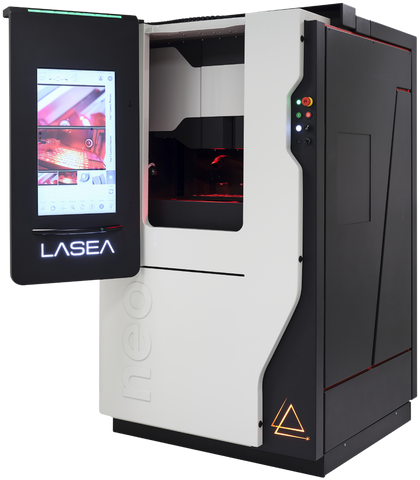Technology of Lasea: Guide to Laser-Assisted Energy Applications
What is Lasea?
Lasea is a laser-assisted energy technology that has revolutionized various industries. It combines the power of lasers with energy applications to achieve precise and efficient results. Lasea offers advanced features and capabilities, making it a preferred choice for many applications.
How does Lasea work?
Lasea operates on the principles of laser energy interaction. It utilizes lasers to manipulate and control energy in various processes. By precisely focusing laser beams, Lasea can achieve accurate and targeted energy applications. The interaction between lasers and energy enables Lasea to deliver exceptional results.
Advantages of Lasea
Lasea offers numerous advantages across different industries. Its precision and efficiency enhance manufacturing processes, leading to improved product quality and reduced waste. Additionally, Lasea’s applications in medical procedures enable minimally invasive surgeries and effective treatments. Furthermore, Lasea contributes to the development of renewable energy technologies and aids in environmental monitoring and analysis.

Applications of Lasea
Industrial Applications
1. Laser-assisted precision manufacturing
Lasea plays a crucial role in precision manufacturing processes. By utilizing lasers, it enables the production of intricate and complex components with exceptional accuracy. Industries such as aerospace, automotive, and electronics benefit from the precision and efficiency of laser-assisted manufacturing. Lasea’s capabilities contribute to increased productivity, reduced production costs, and improved overall quality.
2. Laser-assisted material processing
Lasea’s applications in material processing and modification are invaluable. It enables precise cutting, welding, and surface treatment of various materials. Laser-assisted material processing finds applications in industries like electronics, jewelry, and jewellery devices. Lasea’s ability to control energy with precision ensures minimal material damage and enhanced product performance.
Medical Applications
1. Laser-assisted surgical procedures
Lasea has revolutionized surgical procedures by enabling minimally invasive surgeries. Its precise energy delivery and tissue interaction allow surgeons to perform intricate procedures with minimal damage to surrounding tissues. Laser-assisted surgical procedures offer benefits such as reduced scarring, faster recovery times, and improved patient outcomes. Lasea’s applications include ophthalmology, dermatology, and urology, among others.
2. Laser therapy and treatment
Lasea’s therapeutic applications in medical treatments are significant. It is used for various conditions, including skin rejuvenation, hair removal, and tattoo removal. Laser therapy provides targeted energy delivery, resulting in effective treatment outcomes. Lasea’s advancements in laser technology have expanded its applications in areas such as oncology, dentistry, and physiotherapy.
Energy and Environmental Applications
1. Laser-assisted renewable energy technologies
Lasea contributes to the development of renewable energy sources through its applications in solar energy, wind energy, and bioenergy. It enables precise cutting and shaping of solar panels, enhancing their efficiency. Laser-assisted processes also aid in the manufacturing of wind turbine components. Lasea’s advancements in renewable energy technologies play a crucial role in sustainable energy production.
2. Laser-assisted environmental monitoring
Lasea’s capabilities are utilized in environmental monitoring and analysis. It enables the detection and measurement of pollutants, gases, and particulate matter. Laser-based technologies, such as LIDAR (Light Detection and Ranging), are used for atmospheric research and monitoring. Lasea’s precision and accuracy contribute to effective environmental analysis and aid in understanding climate change and pollution patterns.
FAQs
What safety precautions should be taken when using Lasea?
When using Lasea, it is essential to follow safety guidelines. Protective eyewear should be worn to shield the eyes from laser beams. Adequate ventilation and proper shielding are necessary to minimize exposure to laser radiation. Operators should receive training on laser safety protocols and maintain a safe working environment.
How does Lasea compare to traditional energy applications?
Lasea offers several advantages over traditional energy applications. Its precise energy control allows for accurate and targeted outcomes, reducing waste and improving efficiency. Traditional energy applications may be less precise and result in more material damage or energy loss. Lasea’s advanced technology and capabilities make it a preferred choice for many industries.
Can Lasea be used in sensitive or delicate materials?
Yes, Lasea can be used in sensitive or delicate materials. Its precise energy delivery and control minimize the risk of damage. Lasea’s adjustable parameters allow for customization based on material properties, ensuring the safe and effective processing of delicate materials such as thin films, electronic components, and biological tissues.
What are the potential limitations of Lasea?
While Lasea offers numerous benefits, there are some limitations to consider. Lasea’s effectiveness may vary depending on the material and application. Certain materials may absorb or reflect laser energy differently, affecting the desired outcome. Additionally, Lasea’s cost and complexity may present challenges for smaller-scale applications or industries with limited resources.
How can Lasea contribute to sustainability efforts?
Lasea contributes to sustainability efforts through its applications in renewable energy technologies and environmental monitoring. By enhancing the efficiency of renewable energy sources, Lasea aids in reducing reliance on fossil fuels and mitigating climate change. Additionally, Lasea’s environmental monitoring capabilities enable accurate data collection, supporting informed decision-making for sustainable resource management.
Conclusion
In conclusion, Lasea is a revolutionary technology in laser-assisted energy applications. Its precise energy control and advanced capabilities have transformed various industries, including precision manufacturing, medical procedures, renewable energy, and environmental monitoring. Lasea offers numerous advantages such as increased productivity, improved product quality, and reduced environmental impact.
By utilizing Lasea, industries can achieve precise and efficient manufacturing processes, resulting in enhanced product performance and reduced waste. In the medical field, Lasea enables minimally invasive surgeries and effective treatments, improving patient outcomes and recovery times. Moreover, Lasea plays a vital role in the development of renewable energy technologies, contributing to sustainable energy production.
Environmental monitoring and analysis benefit from Lasea’s precision and accuracy, aiding in understanding climate change and pollution patterns. However, it is essential to follow safety precautions and consider the potential limitations of Lasea for optimal utilization.
As Lasea continues to advance, further exploration and research in laser-assisted energy applications will unlock new possibilities and contribute to a more sustainable and efficient future.




